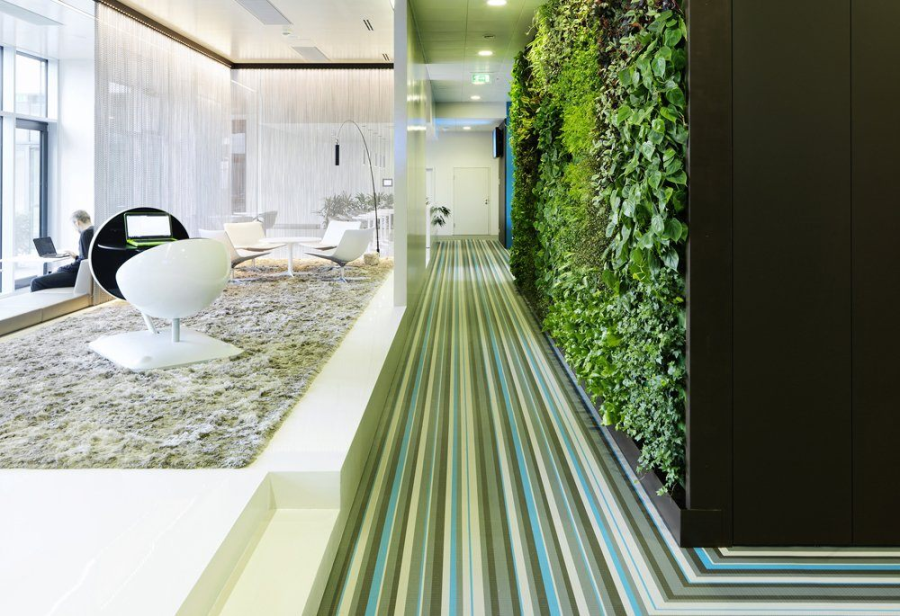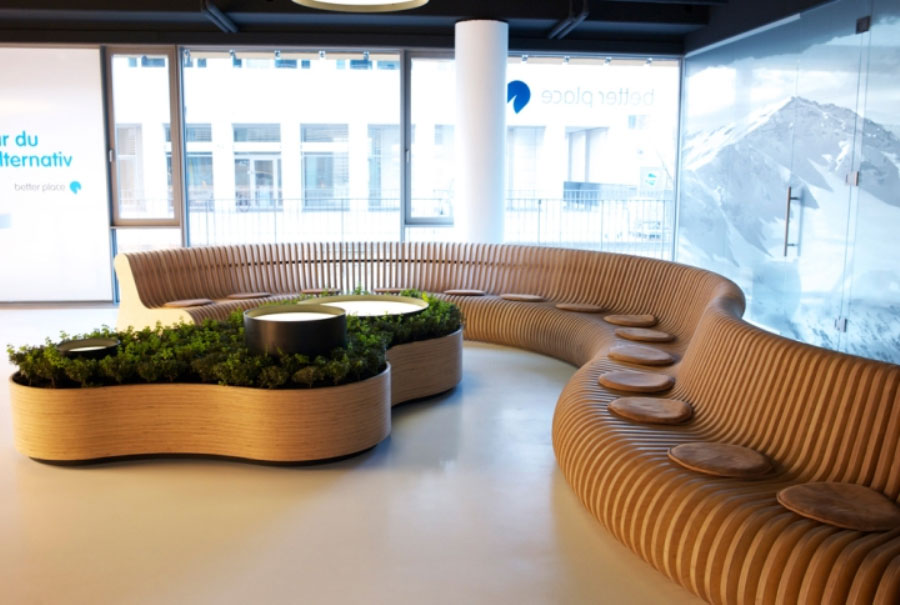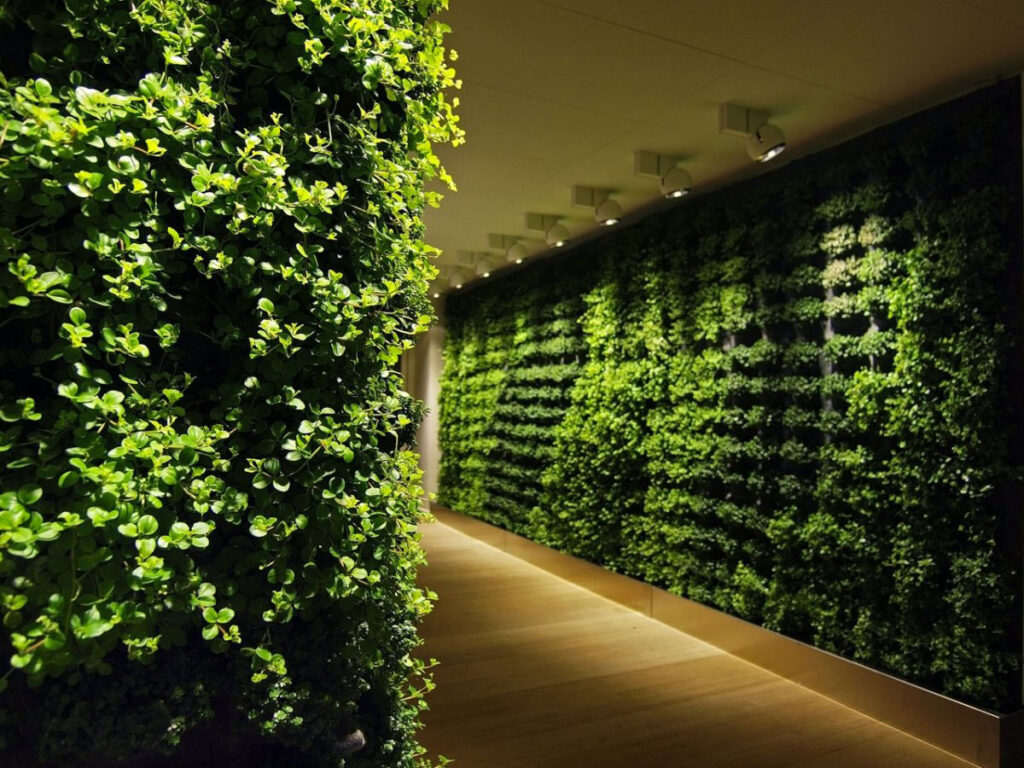
A green wall is vertical vegetation space / architectural element that facilitate plants. These greening systems, similar to green roof, are frequently used as anaesthetical feature in building.
The concept of vertical garden can be traced back to one of the seven wonders in ancient world – the Hanging garden of Babylon. The terraced gardens could support large plants and trees, was allegedly built to appease King Nebuchadnezzar’s homesick wife. It is the earliest predecessor of modern green roofs and living walls.

Modern green wall systems are much more advanced and diversified. It can be made to cover almost any vertical surface including interior, exterior walls and fences. Living walls vary between types, sizes, micro climate and plant selections, but in general include the following benefits:
- Temperature moderation through evapo-transpiration.
- Improved mood and worker productivity
- Potential for living art and aesthetic appeal
- Reduction of ‘Urban Heat Island’ effects
- Noise attenuation
- Filter noxious gas and captures airborne pollutants
- Green image marketing
- Possible LEED points by reduce heating and cooling load and achieve energy savings

Green walls can be often categorized into two types: green facades and living walls.
Green facades are a type of green wall system in which climbing plants or cascading ground covers are trained to cover specially designed supporting structures. Rooted at the base of these structures, in the ground, in intermediate planters or even on rooftops, the plants typically take 3-5 years before achieving full coverage. Green facade can be anchored to exiting walls or built as free standing structures, such as fences or columns.
Technological innovations in Europe and North Americahave resulted in the development of commonly used Modular Trellis Panel and Cable & Wire-Rope Net System.


Living walls are artificial systems, composed of pre-vegetated panels, often vertical modules or planted blankets that are fixed vertically to a structural wall. Plants are usually rooted directly in the structure / growth medium and they often require irrigation system to addition of mineral nutrients. Any plant species, even moss can be grown on a living wall system. Indoor walls are usually planted with tropical species due to the constant mild temperature and the lack of light; while outdoor walls are more restricted to rustic plants. The common systems in this category are felt pocket system & mat media system.

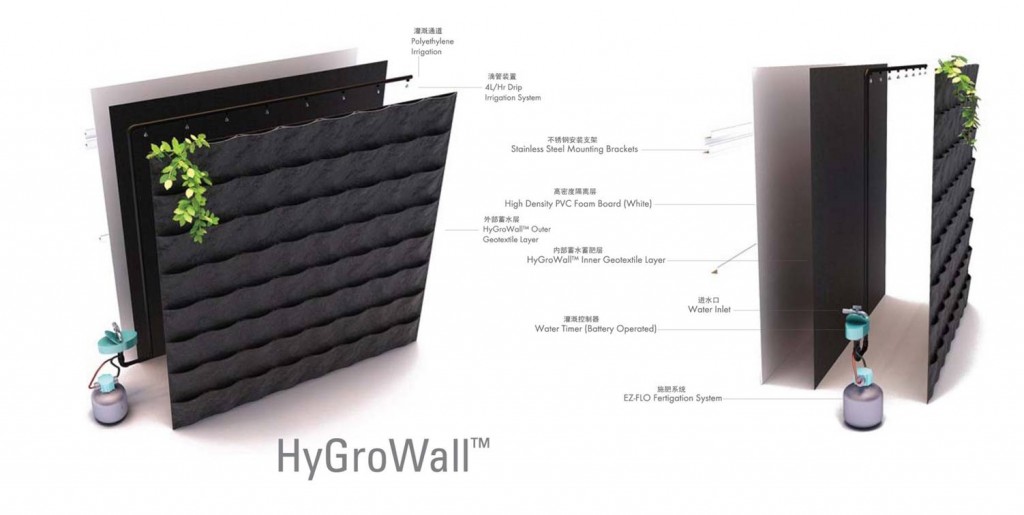
Felt pocket system installation
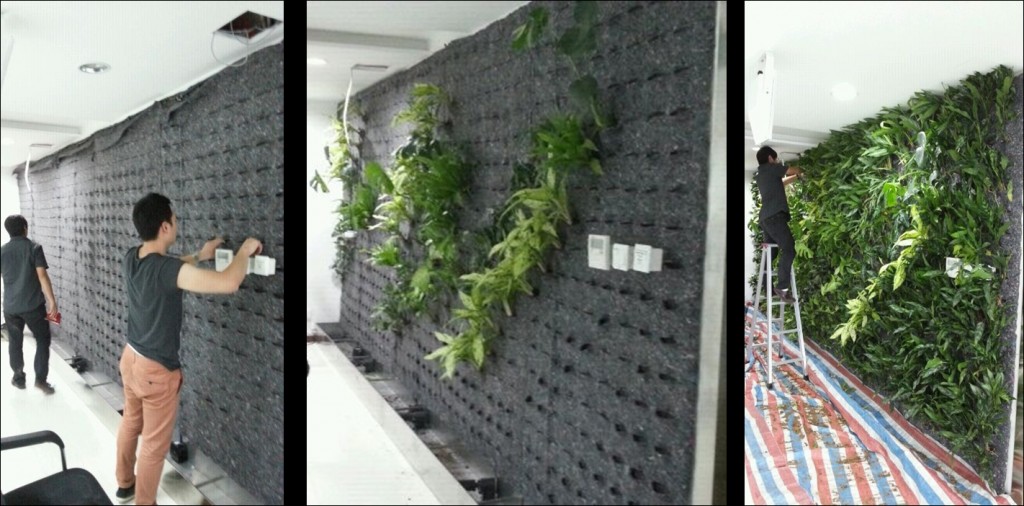
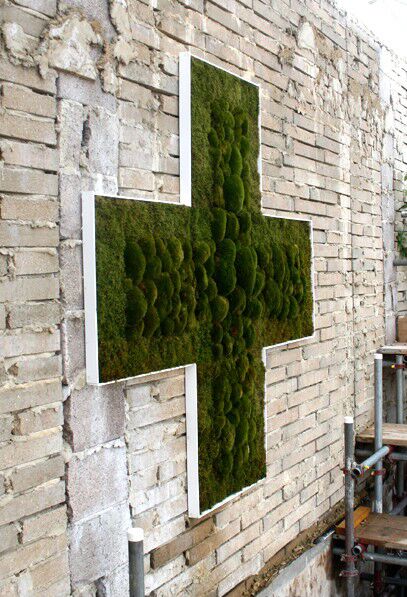
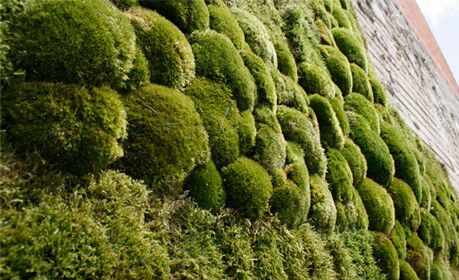
Moss wall as mat media system
Factors for a successful green wall
Green wall projects require that the designers, installers, manufacturers and maintenance staff take the following into careful considerations:
- How the system will be secured to the wall surface
- Calculation of loading capacity, waterproofing and substrate layer.
- Source of irrigation and mineral nutrients for plants
- Appropriate plant selection with consideration of plant spacing, desired coverage, light exposure, hardiness and amenity context.
- Plant maintenance plan to secure the health of these living systems
- Water recycling and drainage
- Light sources
Green wall contributes to LEED V4 certification points:
SS Credit: Landscape design that reduces Urban Heat Islands, non-roof (1-2 Point)
WE Credit: Outdoor water usereduction, reduce irrigation by 50% (1-2 point)
EA Credit: Optimize energy performance (1-18 points)
ID Credit: Innovation in design (1-5 Points)
Green walls are a key component of living architecture and they will become increasingly important fixtures in our built environment in the years to come.
